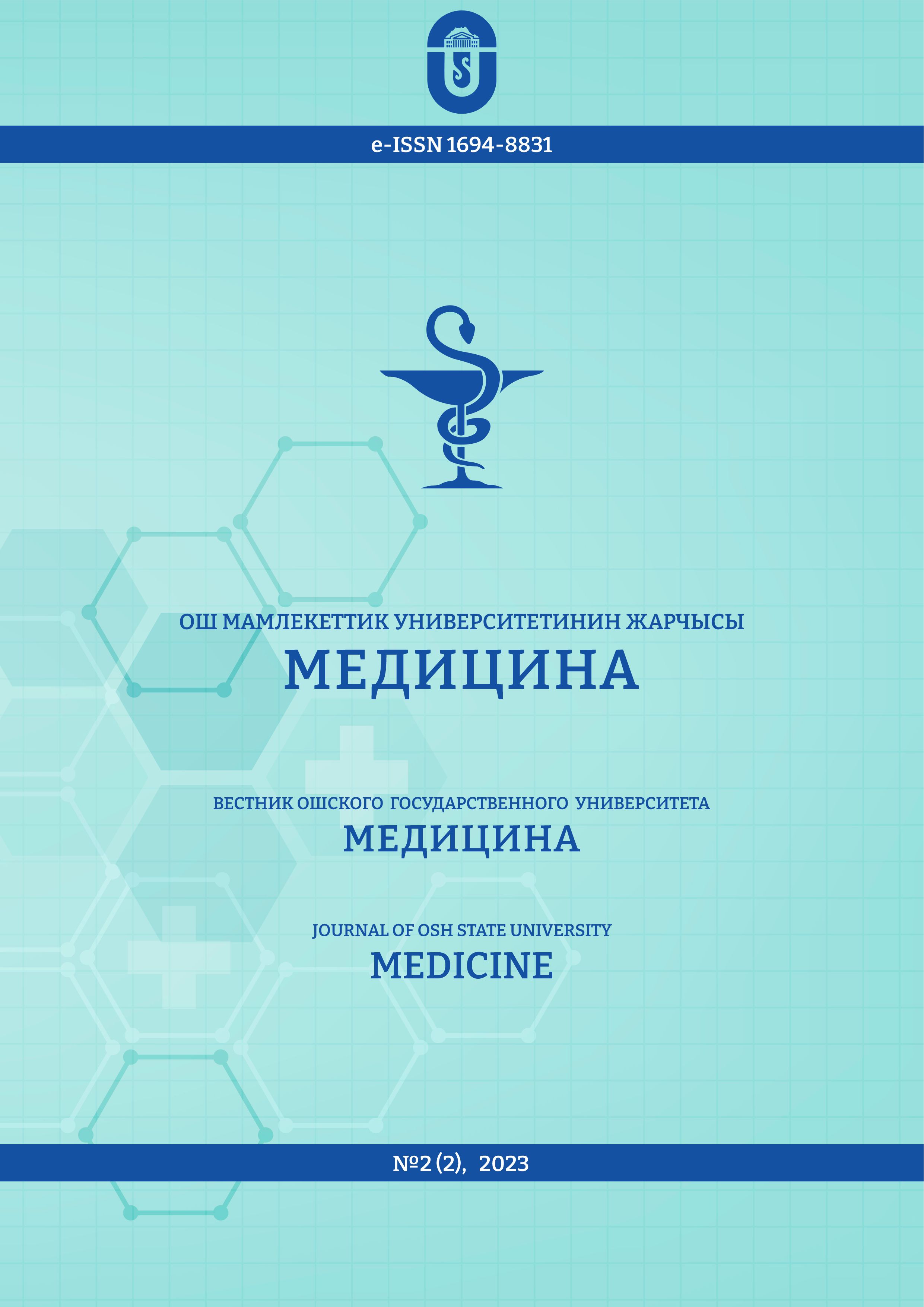ТҮШТҮК-ЧЫГЫШ АЗИЯДАГЫ ГИПЕРТОНИЯНЫН ЖҮГҮ: КҮЧӨГӨН ЭПИДЕМИЯ
DOI:
https://doi.org/10.52754/16948831_2023_2(2)_9Ачкыч сөздөр:
гипертония, Түштүк-Чыгыш Азия, Эпидемия, АзияАннотация
Систоликалык кан басымы ≥140 ммHg жана/же диастоликалык ≥90 ммHg катары аныкталган гипертония, жыл сайын 10 миллиондон ашуун өлүмгө себепкер болгон жүрөк-кан тамыр жана бөйрөк оорулары үчүн негизги глобалдык тобокелдик фактору болуп саналат (ДСУ, 2019). Түштүк-Чыгыш Азияны камтыган Батыш Тынч океан чөлкөмүндө 2015-жылга карата дүйнө жүзү боюнча эң жогорку кан басымы болгон (Forouzanfar et al., 2017). Түштүк-Чыгыш Азияда CVD жыл сайын 3 миллиондон ашуун адамдын өмүрүн алып жаткандыктан, күчөп бараткан гипертония эпидемиясы коомдук саламаттыкты сактоо кризисин курчутат (Allotey et al., 2019). Түштүк-Чыгыш Азияда акыркы 25 жылдын ичинде орточо систолалык кан басымынын жогорулоо тенденциясы байкалып, 1990-жылдан 2015-жылга чейин 127 ммHg дан 131 мм Hg чейин көтөрүлгөн (Forouzanfar et al., 2017). Бул мезгилде дүйнө жүзү боюнча туруктуу өсүп келе жаткан тигетанын бирин чагылдырат.
Библиографиялык шилтемелер
Abegunde, D.O., Mathers, C.D., Adam, T., Ortegon, M., & Strong, K. (2007). The burden and costs of chronic diseases in low-income and middle-income countries. The Lancet, 370(9603), 1929-1938.
Allotey, P., Tan, D.P.S., Matthew, N., & Chan, C. (2019). Nature Reviews Cardiology, 16(9), 537–552.
Forouzanfar, M.H., Liu, P., Roth, G.A., Ng, M., Biryukov, S., Marczak, L., et al. (2017). JAMA, 317(2), 165–182.
Kearney, P.M., Whelton, M., Reynolds, K., Muntner, P., Whelton, P.K., & He, J. (2005). Global burden of hypertension: analysis of worldwide data. The Lancet, 365(9455), 217-223.
Webb, M., Fahimi, S., Singh, G.M., Khatibzadeh, S., Micha, R., Powles, J., & Mozaffarian, D. (2017). Cost effectiveness of a government supported policy strategy to decrease sodium intake: global analysis across 183 nations. BMJ, 356.
WHO. (2019). Hypertension. https://www.who.int/news-room/fact-sheets/detail/hypertension
Liberati, A., Altman, D.G., Tetzlaff, J., Mulrow, C., Gøtzsche, P.C., Ioannidis, J.P., Clarke, M., Devereaux, P.J., Kleijnen, J., & Moher, D. (2009). The PRISMA statement for reporting systematic reviews and meta-analyses of studies that evaluate health care interventions: explanation and elaboration. PLoS medicine, 6(7), e1000100.
MODELA, I., Adair, T., Popkin, B., Guilkey, D., Gultiano, S., Borja, J., Perez, L., & Hindin, M. (2011). National High Blood Pressure Education Program Working Group report on hypertension in the Philippines. Social Science & Medicine, 32(1), 103-114.
Thankappan, K.R., Shah, B., Mathur, P., Sarma, P.S., Srinivas, G., Mini, G.K., Daivadanam, M., Soman, B., & Vasan, R.S. (2010).
Allotey, P., Tan, D.P.S., Matthew, N., & Chan, C. (2019). From hypertension to heart failure in Southeast Asia: facts, gaps, and implications for action. Nature Reviews Cardiology, 16(9), 537–552.
Forouzanfar, M.H., Liu, P., Roth, G.A., Ng, M., Biryukov, S., Marczak, L., Alexander, L., Estep, K., Hassen Abate, K., Akinyemiju, T.F., Ali, R., Alvis-Guzman, N., Azzopardi, P., Banerjee, A., Bärnighausen, T., Basu, A., Bekele, T., Bennett, D.A., ..., Murray, C. (2017). Global Burden of Hypertension and Systolic Blood Pressure of at Least 110 to 115 mm Hg, 1990-2015. JAMA, 317(2), 165–182.
Sabanayagam, C. & Shankar, A. (2012). Income is a stronger predictor of mortality than education in a national sample of US adults. Journal of health, population, and nutrition, 30(1), 82–86.
Webster J.L., Dunford E.K., Hawkes C., Neal B.C. (2017). Salt reduction initiatives around the world. Journal of hypertension, 35(7),1343–1350.


